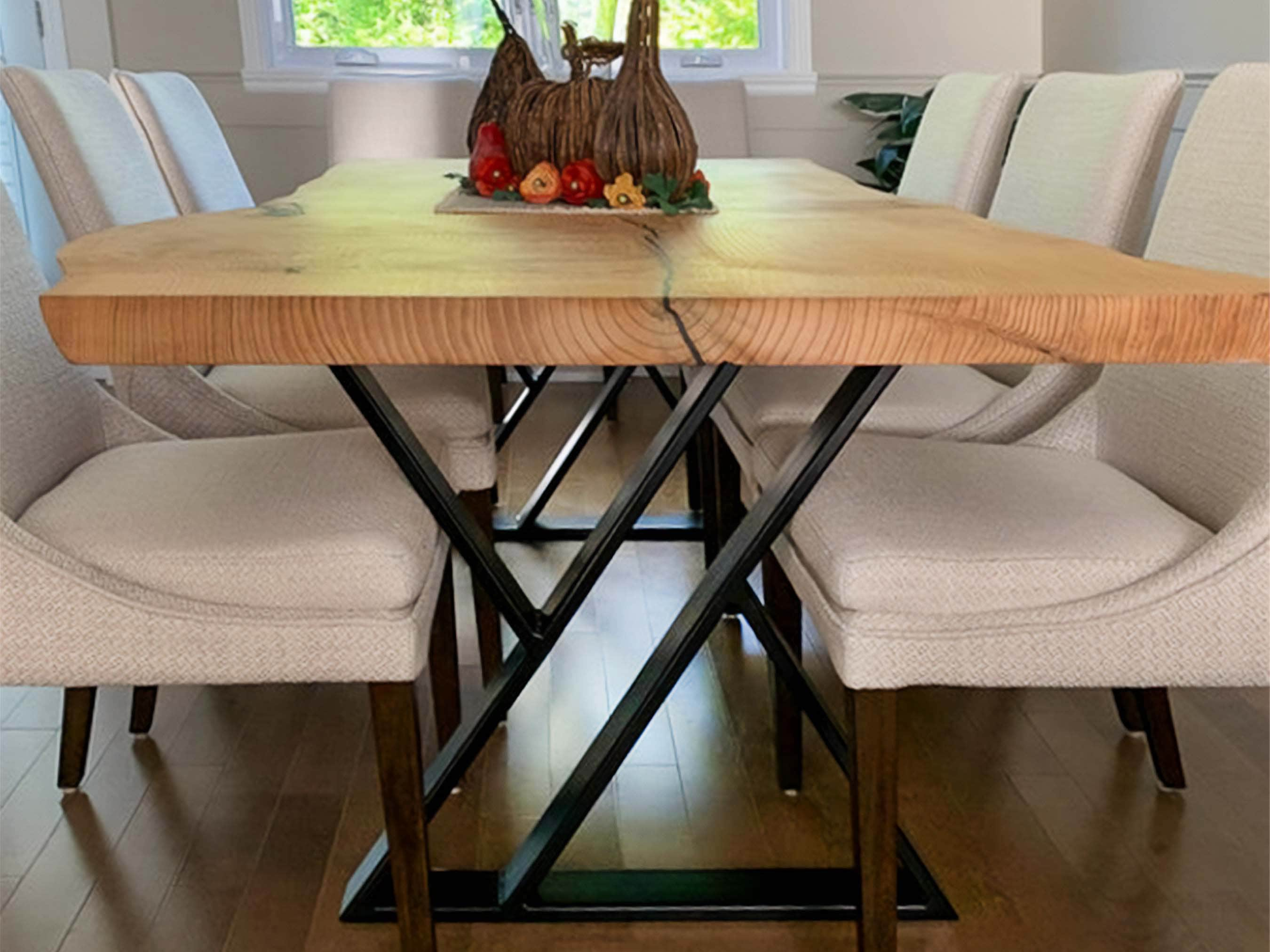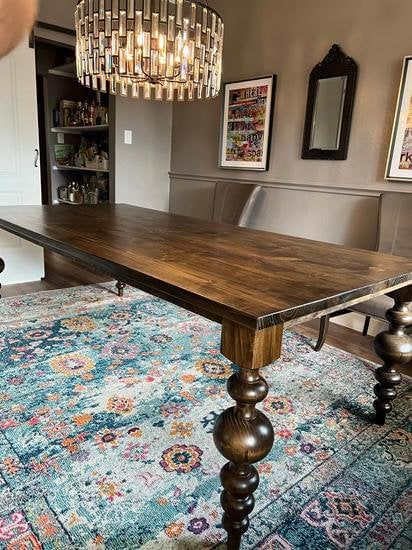From Traditional to Modern: Find the Perfect Dining-room Table Legs for Your Design
While classic layouts such as cabriole and turned legs stimulate a feeling of ageless refinement, contemporary styles like hairpin and geometric alternatives offer a chance for striking visual rate of interest. As you take into consideration these elements, the question continues to be: exactly how can you flawlessly incorporate these diverse leg designs to develop a harmonious dining experience?
Understanding Table Leg Styles
The selection of dining-room table leg designs can substantially influence both the looks and capability of the space. Each leg design adds one-of-a-kind practical functions and visual elements, providing to varied design preferences and use demands. Understanding these designs is vital for picking the ideal table that lines up with your overall interior decoration vision.
For example, tapered legs use a tidy, classic look that can improve an area's sophistication, while pedestal bases give security and optimize legroom, making them perfect for smaller sized rooms. Barrette legs, a characteristic of mid-century modern layout, introduce an industrial style, allowing for an airy, open feeling. Trestle legs evoke rustic appeal, offering durable assistance and a sense of timelessness.
Furthermore, the choice of materials plays a considerable duty. Wood legs can bring heat and appearance, whereas metal alternatives often convey a smooth, modern vibe. Inevitably, understanding table leg styles is crucial for producing a natural dining location that reflects personal style while making certain practicality and convenience. By attentively thinking about these components, you can enhance both the visual and useful appeal of your dining area.
Traditional Table Leg Options
When selecting dining-room table legs, standard choices often personify timeless sophistication and craftsmanship. These styles mirror an abundant heritage and a dedication to top quality, making them suitable for those who value traditional looks.
One of one of the most renowned traditional leg designs is the cabriole leg, defined by its elegant bent shape. This layout typically includes decorative makings and is most commonly located in Queen Anne and Chippendale furnishings. One more preferred choice is the transformed leg, which boasts a collection of smooth, rounded shapes that provide a classic appearance while preserving security.
In addition, the straight leg, while basic, provides a unadorned and tough structure that can mix seamlessly with a selection of tabletop designs. For those attracted to ornate describing, claw-and-ball feet legs evoke a sense of majesty and can work as a magnificent centerpiece in any dining area.
Lastly, pedestal bases, although not purely legs, give a different conventional alternative that enables for enough legroom and can be wonderfully carved. Each of these traditional leg styles contributes to the general atmosphere of an eating room, weding feature with aesthetic allure.

Modern Table Leg Designs
Modern table leg designs use a varied variety of styles that stress ingenious materials and tidy lines. These styles often focus on capability while working as striking prime focus within a dining room. Minimal looks are widespread, with legs crafted from products such as steel, glass, and engineered wood, which add to a modern and ventilated feel.
One popular layout is the barrette leg, characterized by its slender, tapered structure that gives stability without overwhelming the tabletop (dining room table legs). This style is typically found in mid-century modern-day furnishings and can effortlessly complement numerous eating table forms. Another pattern is the usage of geometric forms, where legs might take on angular or asymmetrical forms, adding aesthetic rate of interest and a touch of artistry

Blending Styles for Special Areas
Typically, homeowners seek to create one-of-a-kind eating spaces that show their personal design by blending different design elements. This technique permits the incorporation of varied visual appeals, causing an unified yet unique setting. As an example, coupling a rustic wooden table with sleek, modern steel legs can produce an eye-catching contrast that elevates the area's overall charm.
In addition, incorporating vintage table legs with contemporary table tops can stimulate a sense of history while preserving a modern sensibility. Such combinations not only showcase specific preference however likewise urge creative thinking, enabling home owners to curate a space that really feels both personal and welcoming.
Shade plays a crucial function in this mixing process; choosing table legs that complement or comparison with the existing color design can enhance visual interest. As an example, whitewashed legs can soften the daring of a dark table surface, creating a well balanced aesthetic.
Tips for Selecting the Right Legs
Selecting visit the site the right table legs is necessary for accomplishing both performance and visual appeal in your eating room. Begin by considering the general style of your space. Traditional settings gain from legs that include intricate makings or turned styles, while modern rooms may require streamlined, minimal designs.
Next, assess the elevation and security of the legs. websites dining room table legs. Common dining tables range between 28 to 30 inches in height, so make sure the legs complement this measurement for convenience. Additionally, durable products, such as wood or metal, can boost security and longevity
Assess the leg form as well-- options include straight, tapered, or pedestal layouts. Straight legs offer a timeless appearance, while tapered legs can include a touch of elegance. Pedestal bases offer adequate legroom and are ideal for smaller sized rooms.
Final Thought
In recap, selecting the excellent dining area table legs calls for mindful factor to consider of both conventional and contemporary designs. By harmonizing leg style, height, and product with the overall décor, a cohesive and welcoming environment can be achieved.
The variety of dining space table leg styles can significantly influence both the visual appeals and performance of the room. Eventually, understanding table leg styles is crucial for creating a natural dining location that reflects personal style while ensuring look at this website practicality and comfort.One of the most renowned traditional leg designs is the cabriole leg, identified by its stylish bent form. Straight legs offer a classic look, while tapered legs can include a touch of beauty.In recap, selecting the perfect eating room table legs calls for mindful consideration of both conventional and modern-day designs.